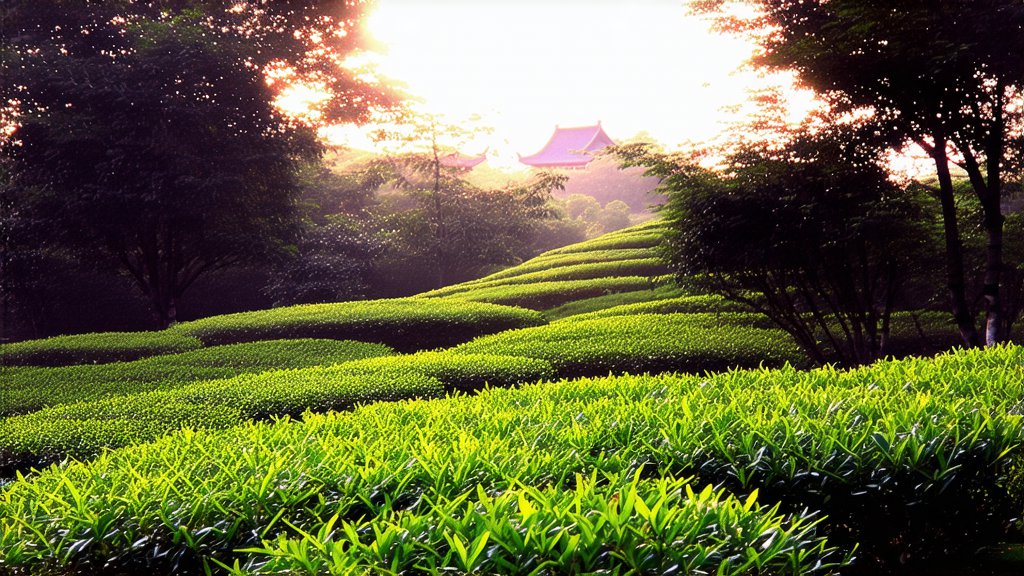
China, a land steeped in millennia of cultural heritage, offers a treasure trove of tea varieties that have captivated palates and minds alike for centuries. Among these, Junshan Yinzhen stands as a testament to the artistry and precision inherent in the craft of tea-making. This exquisite yellow tea, hailing from the lush mountains of Junshan County in Hunan Province, is not just a beverage but an experience—a journey through time, tradition, and terroir.
Historical Roots: A Legacy Brewed in Time
The history of Junshan Yinzhen is intertwined with the evolution of Chinese tea culture itself. Its origins trace back to the Tang Dynasty (618-907 AD), a period marked by significant advancements in agricultural practices and cultural refinement. It was during this era that the unique processing method for yellow tea was developed, distinguishing it from green and black teas. Junshan Yinzhen, meaning "Silver Needle from Junshan," quickly gained favor among emperors and scholars alike, becoming a symbol of sophistication and elegance.
Over the centuries, its production has been meticulously preserved, passing down through generations of tea farmers and masters. Today, Junshan Yinzhen continues to be celebrated not only in China but also internationally, as tea enthusiasts seek out this rare gem for its distinctive flavor profile and health benefits.
Varietals and Cultivation: Nature's Perfect Canvas
Junshan Yinzhen is primarily grown on the misty slopes of Junshan Mountain, where the combination of rich soil, abundant rainfall, and a unique microclimate creates optimal conditions for tea cultivation. The tea bushes used are typically of the Camellia sinensis var. sinensis species, known for their robust flavor and aromatic qualities. These bushes are often aged, with some being over a century old, contributing depth and complexity to the final product.
Harvesting occurs in early spring when the tenderest buds and leaves emerge, ensuring maximum freshness and nutritional value. The picking process is highly selective, focusing on the top two leaves and bud, which are covered in fine silver down—hence the name "Silver Needle." This careful selection is crucial as it directly impacts the tea's flavor, aroma, and overall quality.
The Art of Processing: Transforming Leaves into Gold
The magic of Junshan Yinzhen lies in its intricate processing method, which sets it apart from other tea types. After careful handpicking, the freshly harvested leaves undergo a series of steps designed to preserve their natural essence while imparting unique characteristics.
-
Withering: The first step involves spreading the leaves thinly on bamboo trays to allow them to wilt naturally under controlled conditions. This process reduces moisture content and initiates chemical changes within the leaves.
-
Fixing: Unlike green tea, which is pan-fired or steamed immediately after withering, Junshan Yinzhen undergoes a gentle fixing process known as "悶黃" (mēnhuáng), or "smothering yellow." The leaves are lightly steamed or baked at low temperatures, allowing them to retain more of their natural enzymes and polyphenols, which contribute to its yellowish hue and distinct taste.
-
Shaking and Baking: Following fixing, the leaves are gently shaken to remove excess moisture and then baked at a slightly higher temperature to further develop their flavor. This step also helps in achieving the characteristic yellow color.
-
Drying: Finally, the leaves are slowly dried to reduce moisture content to around 5-6%, ensuring they can be stored without fermenting or spoiling.
Each stage requires meticulous attention to detail and years of experience to perfect, making Junshan Yinzhen a true labor of love.
A Symphony of Flavors: The Art of Tasting Junshan Yinzhen
To truly appreciate Junshan Yinzhen, one must engage in the ritual of tea tasting, or "Gongfu Cha" in Chinese. This practice not only allows for the full expression of the tea's flavors but also fosters a meditative state, enhancing the overall experience.
-
Preparation: Begin by selecting a Gaiwan (a traditional Chinese teapot) and cups made of Yixing clay or porcelain. Warm the utensils with hot water to maintain the tea's temperature.
-
Infusion: Use approximately 3-5 grams of Junshan Yinzhen per 150ml of water. The water temperature should be around 80-85°C (176-185°F), slightly cooler than boiling, to avoid scalding the delicate leaves.
-
Brewing Time: The first infusion should be brief, around 15-20 seconds, to cleanse and awaken the leaves. Subsequent infusions can be gradually extended, each revealing different layers of flavor.
-
Observation: As the leaves unfurl gracefully in the water, observe their transformation from tight buds to vibrant green leaves. Notice the subtle changes in color and aroma with each infusion.
-
Tasting: Sip slowly, allowing the tea to coat your palate fully. Junshan Yinzhen offers a complex bouquet of floral notes, hints of sweet hay, and a lingering umami finish. Pay attention to the texture, which should be smooth and velvety.
-
Appreciation: Take a moment to appreciate the craftsmanship behind each cup, reflecting on the harmony between nature and human ingenuity.
Health Benefits: Nature's Remedy
Beyond its sensory pleasures, Junshan Yinzhen boasts numerous health benefits. Rich in antioxidants, catechins, and amino acids, it supports immune function, aids digestion, and promotes relaxation without causing jitteriness commonly associated with caffeine consumption. Regular consumption has been linked to improved cardiovascular health, enhanced mental clarity, and even potential anti-aging effects.
Conclusion: A Timeless Treasure
Junshan Yinzhen is more than just a tea; it embodies the essence of Chinese tea culture—a harmonious blend of tradition, innovation, and respect for nature. From its storied past to its meticulous present-day production, its every sip tells a story of dedication and artistry. For those fortunate enough to partake in this golden elixir, whether seasoned connoisseurs or curious newcomers, its allure is undeniable, offering a glimpse into the profound depth and beauty of Chinese tea heritage.